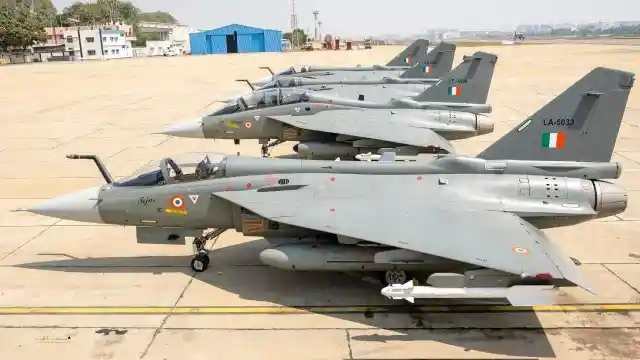India’s indigenous Light Combat Aircraft (LCA) Tejas has been developed to replace the ageing MiG-21 fleet, which has served the Indian Air Force (IAF) since the 1960s. Designed to match the MiG-21’s agility while incorporating modern technology, Tejas draws inspiration from the French Mirage series, combining a lightweight airframe with advanced avionics and multi-role capabilities. Air Chief Marshal (ACM) AP Singh, after his final MiG-21 Bison sortie, highlighted its importance and potential for future upgrades and training roles.

Modern Design and Capabilities
Tejas, developed by the Aeronautical Development Agency (ADA) with Hindustan Aeronautics Limited (HAL), features a small footprint for operation from short runways, fly-by-wire controls, advanced radar, and composite materials that improve agility and reduce radar visibility. Its delta-wing design, inspired by the Mirage 2000, allows high-speed performance and precision handling. At about 13.5 tons, Tejas is lighter than larger fighters like the Su-30 MKI, making it ideal for rapid response and point defense missions.
Combat and Weapon Upgrades
The aircraft already carries air-to-air missiles like Astra Mk-1, air-to-ground munitions, and precision-guided bombs. Ongoing upgrades will integrate advanced weapons such as Astra Mk-2, BrahMos-NG, and anti-radiation missiles, giving Tejas the ability to tackle both air and ground threats effectively.
Training Role
Tejas is also an advanced training platform. The twin-seater variant can replace older trainers like the Kiran and Hawk. Its modern cockpit with glass displays and digital avionics prepares pilots for frontline fighters such as the Rafale and Su-30 MKI, reducing dependence on foreign aircraft while maintaining high training standards.
Transition from the MiG-21
ACM Singh’s final sortie on the MiG-21 Bison marked a symbolic transition as the IAF retires the last MiG-21 squadrons by 2027. The MiG-21, though historically significant, became outdated and accident-prone. Tejas has already completed over 10,000 accident-free sorties and is proving its operational reliability. Over 40 Tejas Mk-1s are in service, with 83 Mk-1A variants on order and plans for the Mk-2 variant with greater range, payload, and stealth features. The program reflects India’s growing defense capabilities and technological innovation.
Operation Sindoor and Tri-Service Coordination
Operation Sindoor showed how India’s Army, Navy, and Air Force can work together without major structural changes. ACM Singh said, “Operation Sindoor is a perfect example that we can operate strongly together. What we need is a joint planning and coordination center in Delhi.” He emphasized that the Air Force now plays a primary role in modern warfare, employing air power offensively while maintaining the human element in the cockpit.
Lessons for Modern Warfare
Singh stressed the importance of clear objectives in conflict and knowing when to stop after completing the mission. Operation Sindoor has moved India’s armed forces from learning to operational readiness. The inaugural day of ‘Ran Samvad 2025’ brought together senior officials from all three services to analyze global conflicts and plan for future operations, with Defence Minister Rajnath Singh set to address the conference the next day.
A New Era for India’s Air Power
With Tejas strengthening India’s air power, improving pilot training, integrating advanced weapons, and joint operations like Sindoor proving effective, India is entering a modern, coordinated, and capable era for its military.
